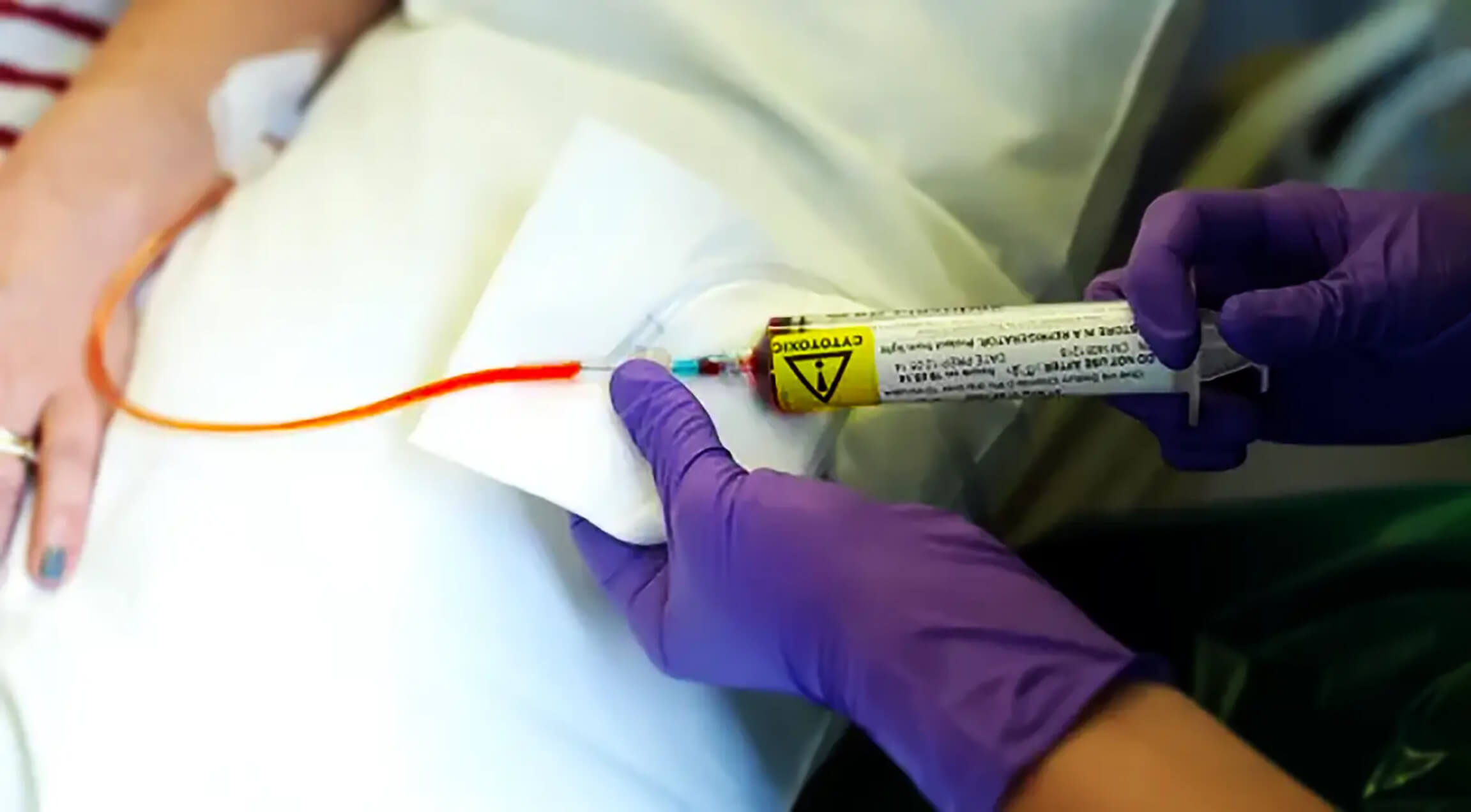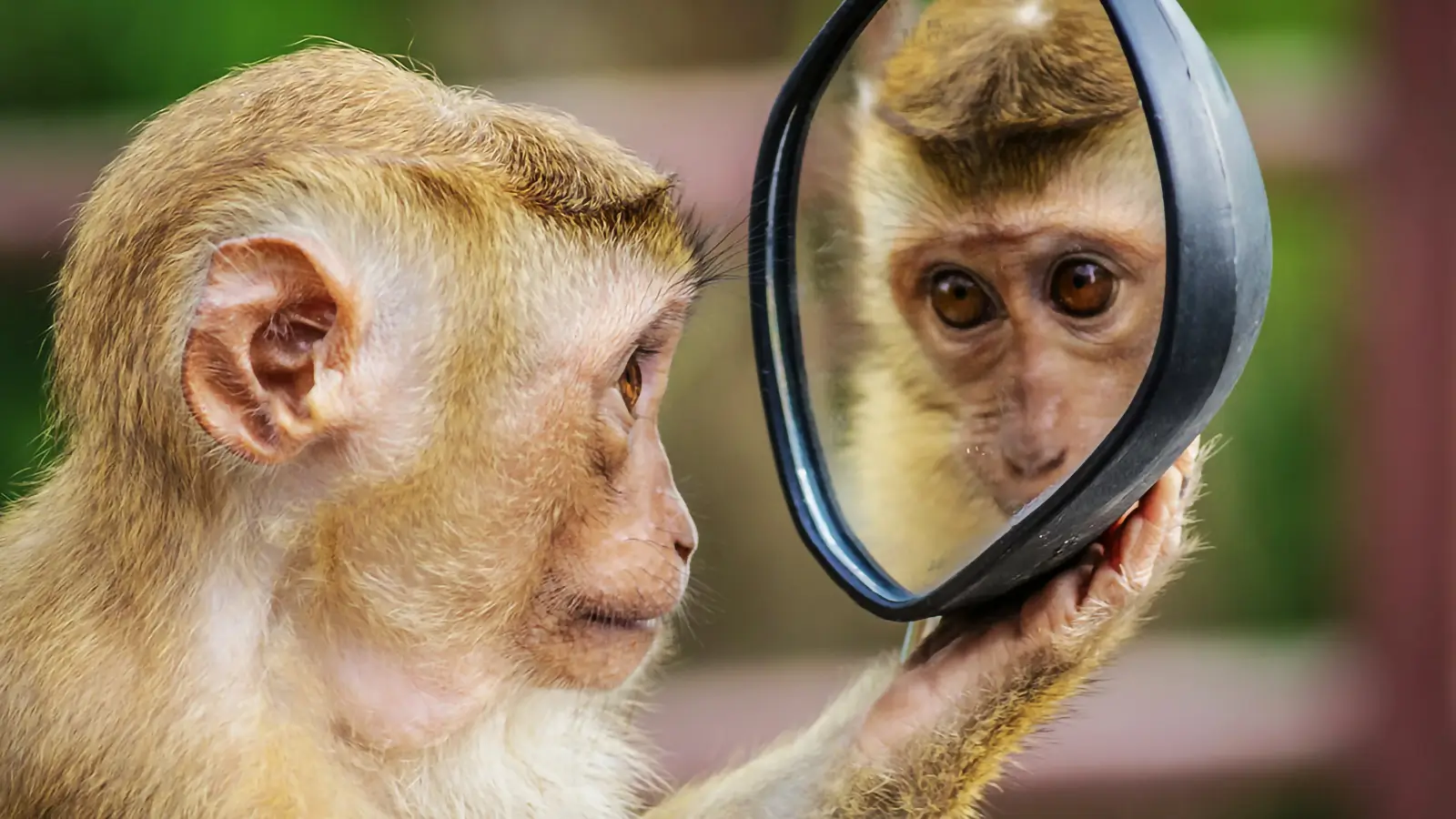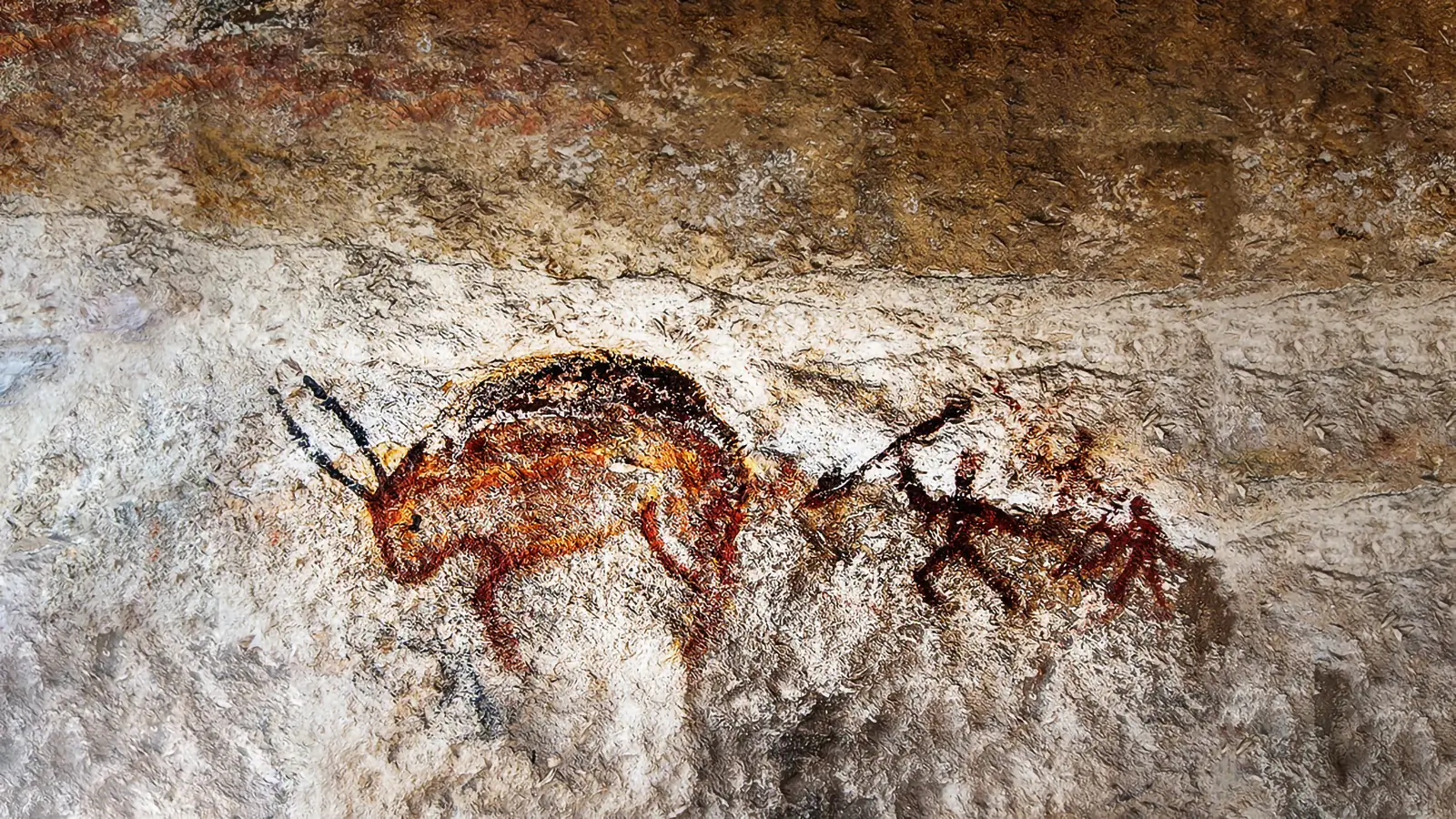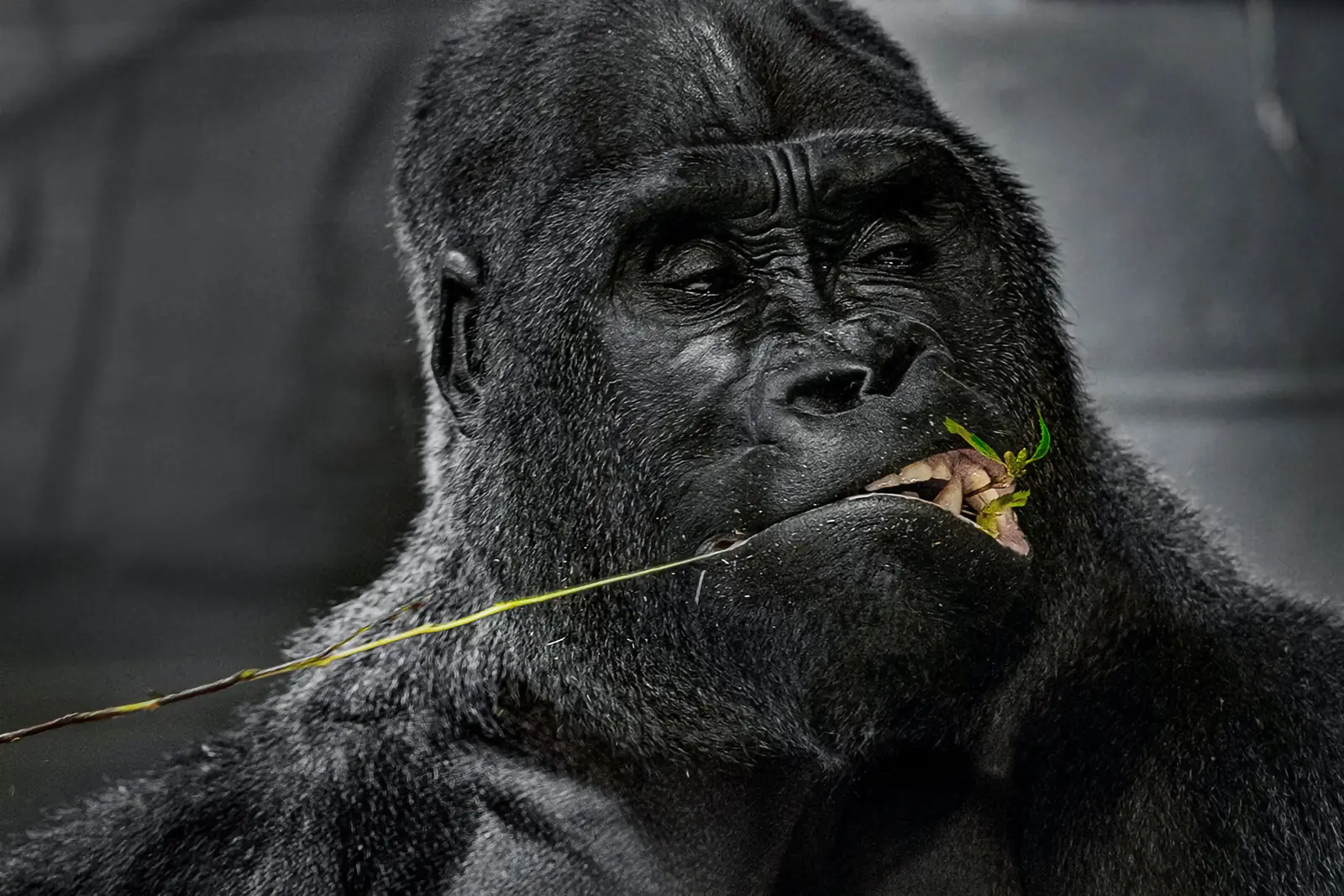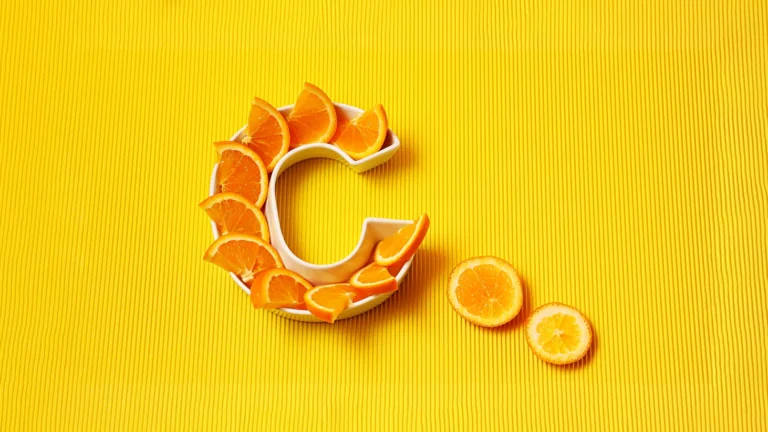Brain size, intelligence and meat consumption- The vegan argument
Combining some amount of foraged meat to the predominantly vegan diet did not become a pivotal force in the emergence of human intelligence and brain size.
Milos Pokimica
Written By: Milos Pokimica
Medically Reviewed by: Dr. Xiùying Wáng, M.D.
Updated June 9, 2023Was cooking the crucial part of developing a human brain size or was its use of Stone Age tools, or whether adding starch-rich USOs (underground storage units) or meat to the diet?
What was the most crucial energy source that provided much-needed energy for the development of the brain size?
The debates are emotional in nature, and not as logical as science needs to be. It is because of our underlying desire to prove to ourselves that meat consumption is natural for human evolution so that we can justify large-scale meat consumption in the modern era. The scientific and archeological data can become a problem in this scenario if data don’t reflect the desirable way of looking at things.
Scientists are not immune to emotional bias. In order to have large-scale meat consumption on a daily basis, the two criteria must be met.
(1) We need to have a viable option for acquiring the meat.
(2) We need to have the physiological ability to digest it.
The first criteria for humans that are not anatomical hunters and are slow and weak and cannot compete with true anatomical hunters are to scavenge for it. That option will not support the calorie requirement and can only be an additional source of calories to a small extent. For the second option, we would need to have fire technology. Subsequently, anything before Homo erectus is excluded. Some scientists believe that even Homo erectus was not capable of controlling the fire. It is a big debate.
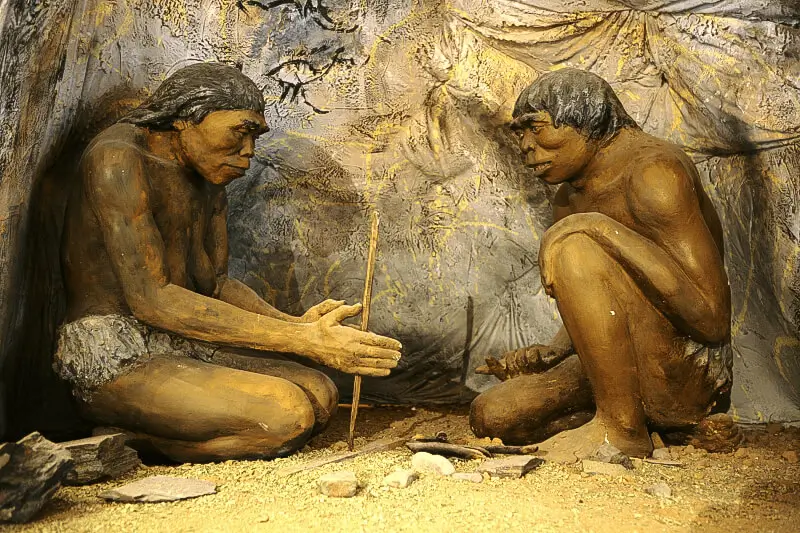
Currently, the earliest well-accepted instance of fire-burning in a controlled manner came from Israel’s Qesem Cave 400,000 years ago.
When you don’t hunt and you live on a tree and you need to forage for edible leaves and fruit you have a difficult life. What happened then is a process of natural selection that strongly favors traits that enhance the efficiency of foraging. Hence, as plant foods became increasingly important over time adaptation gradually gave rise to the group of characteristics presently considered the property of primates. Most of these traits are adapted to facilitate the movement and foraging in trees.
For example, adaptation yielded hands well suited for grasping branches and manipulating slender and small fruit and leaves. In order to detect ripe fruits and enable safe moving through arboreal habitats adaptation forced improvement of the optical capabilities (including depth perception, sharpened acuity, and color vision). Good vision is crucial for moving through the three-dimensional space of the forest canopy and quickly determining the appearance of ripe fruits or tiny, young leaves. Carnivorous species do not have full-color vision. They do not need to detect ripe fruits.
Moreover, such environmental pressures also favored the ability to learn and remember the identity and locations of edible plant parts and also to calculate the optimal foraging strategies to save energy thus increasing behavioral flexibility as well. Foraging benefits from the improvement of visual and cognitive skills. As a result, it promoted the development of unusually large brain sizes, a characteristic of primates since their inception.
Eating meat or bone marrow had nothing to do with the development of the larger brain size. Different plant foods will lack the different nutrients we need. For example, one plant may have some but not all amino acids and vitamins at an adequate level, or even if it is nutrient-dense and doesn’t have fiber it may lack energy in the form of carbohydrates (starch and sugar). Mammals that depend primarily on plants for meeting their daily nutritional requirements and are not adapted for one particular plant food source that is in abundance as a consequence must seek out a variety of complementary food sources from a different array of plants.
They have to combine different food types to get all of the nutrients they need. This demand greatly complicates food gathering. It is a tough life, and it is a constant struggle for food and requires constant use of thinking.
Most arboreal hominids and other primates concentrate on ripe fruits on one side and young leaves. They eat other types of food too, but these two are the main ones. Fruits tend to be rich in energy in the form of fructose and relatively low in fiber, but they might not provide all of the essential amino acids and tend to be the rarest of all plant sources. This kind of scarcity complicates things because if in a certain period of the year there are no fruits available. During that time period, the energy requirement is not met, and there is a need for supplementation with different plant sources. Leaves are full of protein and are everywhere, but they are of lower quality meaning there are no carbohydrates in them and we cannot live on them alone, and they tend to be filled with undesirable toxic chemicals.
Because primates are not adapted for digesting fiber they eat young leaves that are softener than the tough old ones that cannot be digested. When trees exhibit seasonal peaks in the production of fruits and young leaves primates have to eat them as much as they can and reliance on a single food choice is not sustainable.
From an evolutionary view, there are two basic strategies for coping with these problems.
One is to increase the efficiency of nutrient extraction from fibrous foods. This is a form of adaptation that we can see in mammals that are grazers.
For hominids in the past and also for primates, and humans fiber essentially go through their stomach unchanged.
Another biological adaptation that can facilitate survival on low-quality plant food is to grow larger over time. When an animal goes larger compared to smaller animals, it will consume greater overall amounts of food to feed its more extensive tissue mass. However, for reasons that science had not been able to entirely explain, the more massive the animal is the fewer calories it needs to sustain itself and attain adequate nourishment. In mathematical terms, larger animals need less energy per unit of body weight. What this means is that larger animals are able to eat less and can eat lower-quality food to meet their energy requirements.
However, growing bigger for primates is not an option because they are arboreal animals. For growing too massive, they risk falling to their death.
Another evolutionary strategy is open to arboreal plant eaters and is more behavioral than biological.
It is a foraging strategy. Because fruits are rare and very sporadically scattered in tropical forests, the strategy requires the implementation of practices that promise to reduce the energy of acquiring these resources. In order to survive the primates must use their brains more and more to form foraging strategies that are sustainable. A good memory would significantly improve the approach. Ability to recall the exact places of plants that produce desirable fruits and when these trees were likely to bear ripe fruits and to remember the precise directions to these trees would improve foraging profitability in energy expenditure sense by lowering search and travel energy costs by enlarging brain capacity to remember and to plan in advance.
In comparison, grazers do not need brain development because their food is all around them and all they need is to lower their head. Reliance on memory and foraging strategies have pushed for the selection and development of a bigger brain size that has a higher ability for storing information. As a group, primates have always depended on selective feeding and on having the brainpower to carry off this strategy successfully.
The growth of the brain size in combination with growth in body size and a decline in teeth size supports the notion of a high-quality diet. And this is an evolutionary adaptation that is universal to all primates in the last 66 Ma. Some have gone far like humans. We have a brain evolved enough to create pure refined white sugar.
Most other plant-eating species, in opposition, have tended to focus heavily on physiological adaptations for better digesting fiber in order to reduce the need to invest energy in searching for high-quality food. Behavioral adaptations, requiring increased brain power, enable certain species to choose high-quality food.
If we look calorie-wise, the brain is the most expensive organ to maintain. It takes over the vast amount of energy from food, roughly 20% at rest in humans. Natural selection is not going to favor the development of a massive brain size if it is not going to get any benefits from enlargement. The appearance of modern humans with big and capable brains occurred because natural selection favored adaptations that focused on the efficiency of foraging. That was the line of evolution that permitted primates to focus their feeding on the most energy-dense, low-fiber diets they could find, and find is a crucial word.
Finding high-quality food in a scarce environment is what created modern humans. It had little to do with eating meat or any other form of energy. A form of energy is of lesser importance than the way that energy is obtained. In other words, if the meat had anything to do with the development of brainpower, then all of the carnivore species on this planet will be colonizing the outer reaches of the galaxy by now. There is no magic nutrient in the meat that was responsible for the rise of human brainpower. Meat is just meat, another energy source.
There is no absolute correlation between meat eating and intelligence. The manner of combining some amount of foraged meat with a predominantly vegan diet did not become a pivotal force in the emergence of modern humans. Also, it is not even correlated to brain size either. There is no particularly strong relationship between brain size and intelligence, with a correlation value between 0.3 and 0.4 out of a possible 1.0. it is the number of neurons in the brain no matter what that brain size is, that counts (Dicke & Roth, 2016). The human brain has the largest number of cortical neurons (about 15 billion), despite the fact that the human brain and cortex are much smaller in size than, for example, those of cetaceans and elephants (with 10–12 billion or even fewer cortical neurons).
References:
- Dicke, U., & Roth, G. (2016). Neuronal factors determining high intelligence. Philosophical transactions of the Royal Society of London. Series B, Biological sciences, 371(1685), 20150180. https://doi.org/10.1098/rstb.2015.0180
- Barr, W. Andrew, et al. “No Sustained Increase in Zooarchaeological Evidence for Carnivory After the Appearance of Homo Erectus.” Proceedings of the National Academy of Sciences of the United States of America, vol. 119, no. 5, National Academy of Sciences, Jan. 2022, https://doi.org/10.1073/pnas.2115540119.
Related Posts
Do you have any questions about nutrition and health?
I would love to hear from you and answer them in my next post. I appreciate your input and opinion and I look forward to hearing from you soon. I also invite you to follow us on Facebook, Instagram, and Pinterest for more diet, nutrition, and health content. You can leave a comment there and connect with other health enthusiasts, share your tips and experiences, and get support and encouragement from our team and community.
I hope that this post was informative and enjoyable for you and that you are prepared to apply the insights you learned. If you found this post helpful, please share it with your friends and family who might also benefit from it. You never know who might need some guidance and support on their health journey.
– You Might Also Like –

Learn About Nutrition
Milos Pokimica is a doctor of natural medicine, clinical nutritionist, medical health and nutrition writer, and nutritional science advisor. Author of the book series Go Vegan? Review of Science, he also operates the natural health website GoVeganWay.com
Medical Disclaimer
GoVeganWay.com brings you reviews of the latest nutrition and health-related research. The information provided represents the personal opinion of the author and is not intended nor implied to be a substitute for professional medical advice, diagnosis, or treatment. The information provided is for informational purposes only and is not intended to serve as a substitute for the consultation, diagnosis, and/or medical treatment of a qualified physician or healthcare provider.NEVER DISREGARD PROFESSIONAL MEDICAL ADVICE OR DELAY SEEKING MEDICAL TREATMENT BECAUSE OF SOMETHING YOU HAVE READ ON OR ACCESSED THROUGH GoVeganWay.com
NEVER APPLY ANY LIFESTYLE CHANGES OR ANY CHANGES AT ALL AS A CONSEQUENCE OF SOMETHING YOU HAVE READ IN GoVeganWay.com BEFORE CONSULTING LICENCED MEDICAL PRACTITIONER.
In the event of a medical emergency, call a doctor or 911 immediately. GoVeganWay.com does not recommend or endorse any specific groups, organizations, tests, physicians, products, procedures, opinions, or other information that may be mentioned inside.
Editor Picks –
Milos Pokimica is a health and nutrition writer and nutritional science advisor. Author of the book series Go Vegan? Review of Science, he also operates the natural health website GoVeganWay.com
Latest Articles –
Top Health News — ScienceDaily
- MIT scientists strip cancer of its sugar shieldon December 23, 2025
Scientists at MIT and Stanford have unveiled a promising new way to help the immune system recognize and attack cancer cells more effectively. Their strategy targets a hidden “off switch” that tumors use to stay invisible to immune defenses—special sugar molecules on the cancer cell surface that suppress immune activity. Early tests show it can supercharge immune responses and outperform current antibody therapies.
- Scientists find a weak spot in deadly fungus that shut down hospital intensive care unitson December 23, 2025
A deadly hospital fungus that resists nearly every antifungal drug may have an unexpected weakness. Researchers discovered that Candida auris activates specific genes during infection to hunt for nutrients it needs to survive. This insight came from a new living-host model that allowed scientists to watch the fungus in action. The findings could eventually lead to new treatments or allow current drugs to be repurposed.
- This ultra-sensitive imaging system can spot cancer earlieron December 23, 2025
A new imaging technology can distinguish cancerous tissue from healthy cells by detecting ultra-weak light signals. It relies on nanoparticles that bind to tumor markers, making cancerous areas easier to identify. The system is far more sensitive than existing tools and could speed up cancer screening. Scientists believe it may help detect tumors earlier and reduce delays in diagnosis.
- Hidden brain maps that make empathy feel physicalon December 23, 2025
When we watch someone move, get injured, or express emotion, our brain doesn’t just see it—it partially feels it. Researchers found eight body-like maps in the visual cortex that organize what we see in the same way the brain organizes touch. These maps help us instantly understand actions, emotions, and intentions in others. The discovery sheds light on human empathy and opens doors for new brain-based therapies and AI systems that better understand the body.
- Are they really listening? Watch their blinkson December 23, 2025
Your eyes may reveal when your brain is working overtime. Researchers found that people blink less when trying to understand speech in noisy environments, especially during the most important moments. The effect stayed the same in bright or dark rooms, showing it’s driven by mental effort, not light. Blinking, it turns out, is a quiet marker of focused listening.
- This cancer-fighting molecule took 50 years to buildon December 22, 2025
MIT scientists have achieved the first-ever lab synthesis of verticillin A, a complex fungal compound discovered in 1970. Its delicate structure stalled chemists for decades, despite differing from related molecules by only two atoms. With the synthesis finally complete, researchers created new variants that showed strong activity against a rare pediatric brain cancer. The breakthrough could unlock an entire class of previously unreachable cancer-fighting molecules.
- A new drug could stop Alzheimer’s before memory loss beginson December 22, 2025
New research suggests Alzheimer’s may start far earlier than previously thought, driven by a hidden toxic protein in the brain. Scientists found that an experimental drug, NU-9, blocks this early damage in mice and reduces inflammation linked to disease progression. The treatment was given before symptoms appeared, targeting the disease at its earliest stage. Researchers say this approach could reshape how Alzheimer’s is prevented and treated.
PubMed, #vegan-diet –
- Comparing diet-related attitudes, perceptions, and behaviors of vegan and omnivorous adults: results from a cross-sectional survey study in Germanyon December 22, 2025
CONCLUSION: The findings are consistent with and build on existing research on cognitive and behavioral patterns related to a vegan diet, while at the same time yielding some additional insights. In particular, the results on significant differences in the risk-benefit perception of a vegan diet, as well as on motivations and influences regarding the decision to follow a vegan diet provide an important basis for the development of public health interventions and a foundation for further […]
- Assessment of vitamin A, vitamin B2, vitamin B12, vitamin K, folate, and choline status following 4 months of multinutrient supplementation in healthy vegans: a randomised,…on December 19, 2025
CONCLUSION: A multinutrient supplement containing 82 µg of vitamin B(12) per day significantly positively affected vitamin B(12) blood biomarkers in healthy vegans.
- Exploring the synergistic potential of pH and ultrasonication on the functional properties of pea and lentil protein isolates and its formulation in food producton December 15, 2025
The substitution of meat proteins with plant-based proteins from various sources is often motivated by nutritional considerations. However, the inherent limited solubility of plant proteins, which results in suboptimal techno-functional properties, remains a persistent challenge in food formulation. The purpose of this study was to utilize unique properties of pea (Pisum sativum L.) and lentil (Lens culinaris) through ultrasonication and pH variation in order to develop a stable and […]
- Healthful and Unhealthful Plant-Based Diets and Their Association with Cardiometabolic Targets in Women Diagnosed with Breast Cancer: A Cross-Sectional Analysis of a Lifestyle Trialon December 11, 2025
CONCLUSIONS: Maintaining cardiometabolic risk factors within normal ranges is clinically relevant in BCS, and this may be more likely when a plant-based diet is consumed, especially if low in unhealthy plant foods.
- Functional and Nutritional Properties of Lion’s Mane Mushrooms in Oat-Based Desserts for Dysphagia and Healthy Ageingon December 11, 2025
Hericium erinaceus (Lion’s Mane mushroom) is a medicinal species recognised for its neuroprotective and antioxidant properties. This study investigated its potential as a functional ingredient in oat milk-based desserts formulated for individuals with dysphagia. Freeze-dried Lion’s Mane powder (LMP), containing high-quality protein (~16%, amino acid score 88%), dietary fibre (~31%), and phenolic compounds (72.15 mg GAE/g), was incorporated at varying levels using gelatin or iota-carrageenan […]
Random Posts –
Featured Posts –
Latest from PubMed, #plant-based diet –
- Associations Between Healthy and Plant-Based Dietary Patterns and Cognitive Reserve: A Cross-Sectional Analysis of the 1946 British Birth Cohortby Kelly C Cara on December 23, 2025
CONCLUSIONS: CR was positively associated with healthy dietary patterns and inversely associated with unhealthful plant-based dietary patterns. Diet uniquely explained variations in CR and should be considered among influential lifestyle factors in future research. Longitudinal analyses are needed to confirm these findings.
- Dietary quercetagetin attenuates H2O2-induced oxidative damage and preserves meat quality in broilers by modulating redox status and Nrf2/ferroptosis signaling pathwayby Wenyue Hu on December 22, 2025
In modern poultry production, oxidative stress has emerged as a pivotal factor compromising the health status and overall performance of broiler. The aim of this study was to investigate the effects of dietary quercetagetin (QG) supplementation on hydrogen peroxide (H(2)O(2))-induced oxidative damage in breast muscle of broilers, focusing on growth performance, meat quality, and antioxidant function, and elucidating the underlying mechanisms. Two hundred and forty one-day-old Cobb broilers […]
- Effects of dietary selenium supplementation on physiological parameters, tissue fatty acid composition, and fatty acid-metabolism relative gene expression of grouper (Epinephelus coioides) fed high…by Yen-Chun Lee on December 22, 2025
The present study evaluated the effects of dietary selenium (Se) supplementation on growth performance, physiological responses, tissue fatty acid profiles, and the expression of genes related to fatty acid metabolism in juvenile grouper (Epinephelus coioides). A control diet based on soy protein concentrate, replacing 40% of the fish meal protein, was supplemented with graded levels of Se at 0, 0.3, 0.6, and 1.0 mg Se kg^(-1). A fish meal-based reference diet was also included for […]
- Unravelling the interaction between feeding regimens and milking time in Parmigiano Reggiano PDO milk: an integrated metabolomics and ion mobility lipidomics approachby Pier Paolo Becchi on December 22, 2025
In this study, an integrated approach based on UHPLC-HRMS metabolomics and IM-HRMS lipidomics has been carried out to unravel the interaction between feeding and milking time in the overall chemical profile of Parmigiano Reggiano (PR) milk. Specifically, ANOVA multiblock OPLS (AMOPLS) modelling revealed the complementarity of the assays in combining the effect of these two critical parameters. In particular, metabolomics highlighted the presence of plant-derived compounds (mainly terpenoids […]
- Comparing diet-related attitudes, perceptions, and behaviors of vegan and omnivorous adults: results from a cross-sectional survey study in Germanyby Dan Borzekowski on December 22, 2025
CONCLUSION: The findings are consistent with and build on existing research on cognitive and behavioral patterns related to a vegan diet, while at the same time yielding some additional insights. In particular, the results on significant differences in the risk-benefit perception of a vegan diet, as well as on motivations and influences regarding the decision to follow a vegan diet provide an important basis for the development of public health interventions and a foundation for further […]
- The effect of dietary interventions on peripheral markers of inflammation among people with multiple sclerosis: A systematic review and meta-analysis of randomized controlled trialsby Wade R Pingel on December 21, 2025
CONCLUSIONS: Several dietary interventions may reduce systemic inflammation in PwMS, with greater effects in longer-duration interventions. Calorie-restricted diets did not significantly alter adipokines. Given the limited number and heterogeneity of studies, larger and longer RCTs using comparable dietary interventions are needed to confirm these findings.




